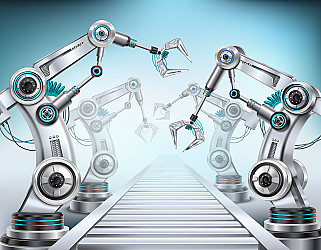The term SCADA is an abbreviation formed by reading the first letters of the words "Supervisory Control and Data Acquisition" in English. With SCADA, a comprehensive and integrated data-based control and monitoring system, it is possible to control, monitor and report the results of all departments of a facility or enterprise, from the management of all equipment to production planning, environmental control departments. SCADA software is expected to perform monitoring, control, data collection, data recording and storage functions. Scada systems are used in industrial processes, production, manufacturing. It can work in continuous, intermittent, repetitive or discrete modes in power generation, manufacturing and oil refineries. Infrastructure operations may include wastewater treatment, oil and gas pipelines, electricity transmission and distribution, wind generators, civil defense siren systems and large communications systems, water treatment and pumping stations in the public or private sectors. This can include public and private facilities, including facility buildings, airports, ships and space stations. Control and monitoring of input and energy consumption in heating and ventilation systems (HVAC) may be required. Scada will continue to be one of the greatest needs of industrial facilities in terms of maximum utility, safety and comfort.
Automatic control and monitoring of all units, from the management of all devices related to the object or enterprise, to production planning, thanks to the comprehensive and integrated Supervisory Control and Data Acquisition System (English: Supervisory Control and Data Acquisition) control system. environmental control units may be acquired to subsidiary enterprises. It is a comprehensive system that allows you to observe past events at the date and time of day, hiding immediate events and alarms.
Such systems, due to their "stratified" (English: scalable) characteristics, allow different enterprises to gradually implement all their control needs.
Resource Management Layer
Business Resource Management Layer
Process control layer
Business control layer
What is the Business Resource Management Layer and how does it work?
In this layer, where the resources needed for the production of the enterprise are planned, decisions are made and implemented to support the production and service policy. Cooperation between service and production management departments and other departments is carried out. Here, Enterprise Resource Planning (ERP) software is used to support management functions at this level. At this layer of an integrated SCADA control system, data from the lowest layer is evaluated and enterprise strategies are developed, policies are defined, and important business decisions are made.
Business Management Layer
Cooperation between departments in enterprises or facilities is ensured at this level. At the level of business management, decisions are made in accordance with the strategies defined at the previous level, and work is carried out in sequence. This layer involves more business management operations.
Process Control Layer
It aims to ensure simultaneous operation between devices and machines by performing monitoring and data collection functions at the Process Control Layer. This layer typically includes controllers and SCADA software in a central control room.
Business Management Layer
It can be defined as the layer where physical control of enterprises is carried out. Here, mechanical and electronic devices are combined with interfaces and perform their work functions. Control commands are converted into electrical signals, signals and machine movements that enable the object to operate at this level, these conversions are collected by electronic sensors. The collected data is converted into electrical signals and transmitted to the SCADA system. Drive motors, valves, lamps, speedometers, proximity detectors, temperature, force and torque electronic sensors are located here. Commands from the SCADA system are converted into electrical signals in this layer, and actions such as opening valves, turning heaters on and off are provided in the real world.
Functions
Monitoring Functions (Event and Alarm Management)
Control functions
Data collection
Data Recording and Storage
.png)

